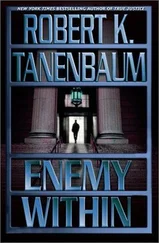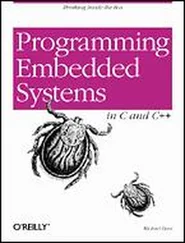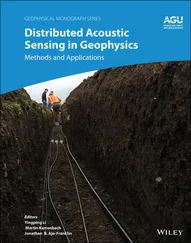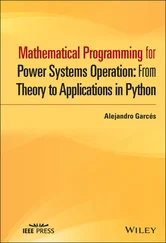15. Why does the bullet server have uncommitted and committed files?
16. In Amoeba, links to a file can be created by putting capabilities with different rights in different directories. These give different users different permissions. This feature is not present in UNIX. Why?
Our second example of a modern, microkernel-based operating system is Mach. We will start out by looking at its history and how it has evolved from earlier systems. Then we will examine in some detail the microkernel itself, focusing on processes and threads, memory management, and communication. Finally, we will discuss UNIX emulation. More information about Mach can be found in (Accetta et al., 1986; Baron et al., 1985; Black et al., 1992; Boykin et al., 1993; Draves et al., 1991; Rashid, 1986a; Rashid, 1986b; and Sansom et al., 1986).
8.1. INTRODUCTION TO MACH
In this section we will give a brief introduction to Mach. We will start with he history and goals. Then we will describe the main concepts of the Mach microkernel and the principal server that runs on the microkernel.
Mach's earliest roots go back to a system called RIG (Rochester Intelligent Gateway),which began at the university of Rochester in 1975 (Ball et al., 976). RIG was written for a 16-bit Data General minicomputer called the Eclipse. Its main research goal was to demonstrate that operating systems could be structured in a modular way, as a collection of processes that communicated by message passing, including over a network. The system was designed and built, and indeed showed that such an operating system could be constructed.
When one of its designers, Richard Rashid, left the University of Rochester and moved to Carnegie-Mellon University in 1979, he wanted to continue developing message-passing operating systems but on more modern hardware. Various machines were considered. The machine selected was the PERQ, an early engineering workstation, with a bitmapped screen, mouse, and network connection. It was also microprogrammable. The new operating system for the PERQ was called Accent. It improved on RIG by adding protection, the ability to operate transparently over the network, 32-bit virtual memory, and other features. An initial version was up and running in 1981.
By 1984 Accent was being used on 150 PERQs but it was clearly losing out to UNIX. This observation led Rashid to begin a third-generation operating systems project called Mach. By making Mach compatible with UNIX, he hoped to be able to use the large volume of UNIX software becoming available. In addition, Mach had many other improvements over Accent, including threads, a better interprocess communication mechanism, multiprocessor support, and a highly imaginative virtual memory system.
Around this time, DARPA, the U.S. Department of Defense's Advanced Research Projects Agency, was hunting around for an operating system that supported multiprocessors as part of its Strategic Computing Initiative. CMU was selected, and with substantial DARPA funding, Mach was developed further. Initially, Mach consisted of a modified version of 4.1 BSD with additional features inserted for communication and memory management. As 4.2 BSD and 4.3 BSD became available, the Mach code was combined with them to give updated versions. Although this approach led to a large kernel, it did guarantee absolute compatibility with Berkeley UNIX, an important goal for DARPA.
The first version of Mach was released in 1986 for the VAX 11/784, a four-CPU multiprocessor. Shortly thereafter, ports to the IBM PC/RT and Sun 3 were done. By 1987, Mach was also running on the Encore and Sequent multiprocessors. Although Mach had networking facilities, at this time it was conceived of primarily as a single machine or multiprocessor system rather than as a transparent distributed operating system for a collection of machines on a LAN.
Shortly thereafter, the Open Software Foundation, a consortium of computer vendors led by IBM, DEC, and Hewlett Packard was formed in an attempt to wrest control of UNIX from its owner, AT&T, which was then working closely with Sun Microsystems to develop System V Release 4. The OSF members feared that this alliance would give Sun a competitive advantage over them. After some missteps, OSF chose Mach 2.5 as the basis for its first operating system, OSF/1. Although Mach 2.5 and OSF/1 contained large amounts of Berkeley and AT&T code, the hope was that OSF would at least be able to control the direction in which UNIX was going.
As of 1988, the Mach 2.5 kernel was large and monolithic, due to the presence of a large amount of Berkeley UNIX code in the kernel. In 1988, CMU removed all the Berkeley code from the kernel and put it in user space. What remained was a microkernel consisting of pure Mach. In this chapter, we will focus on the Mach 3 microkernel and one user-level operating system emulator, for BSD UNIX. One difficulty, however, is that Mach is under development, so any description is at best a snapshot. Fortunately, most of the basic ideas discussed in this chapter are relatively stable, but some of the details may change in time.
Mach has evolved considerably since its first incarnation as RIG. The goals of the project have also changed as time has gone on. The current primary goals can be summarized as follows:
1. Providing a base for building other operating systems (e.g., UNIX).
2. Supporting large sparse address spaces.
3. Allowing transparent access to network resources.
4. Exploiting parallelism in both the system and the applications.
5. Making Mach portable to a larger collection of machines.
These goals encompass both research and development. The idea is to explore multiprocessor and distributed systems while being able to emulate existing systems, such as UNIX, MS-DOS, and the Macintosh operating system.
Much of the initial work on Mach concentrated on single– and multiprocessor systems. At the time Mach was designed, few systems had support for multiprocessors. Even now, few multiprocessor systems other than Mach are machine independent.
8.1.3. The Mach Microkernel
The Mach microkernel has been built as a base upon which UNIX and other operating systems can be emulated. This emulation is done by a software layer that runs outside the kernel, as shown in Fig. 8-1. Each emulator consists of a part that is present in its application programs' address space, as well as one or more servers that run independently from the application programs. It should be noted that multiple emulators can be running simultaneously, so it is possible to run 4.3BSD, System V, and MS-DOS programs on the same machine at the same time.
Fig. 8-1.The abstract model for UNIX emulation using Mach.
Like other microkernels, the Mach kernel, provides process management, memory management, communication, and I/O services. Files, directories, and other traditional operating system functions are handled in user space. The idea behind the Mach kernel is to provide the necessary mechanisms for making the system work, but leaving the policy to user-level processes.
The kernel manages five principal abstractions:
1. Processes.
2. Threads.
3. Memory objects.
4. Ports.
5. Messages.
In addition, the kernel manages several other abstractions either related to these or less central to the model.
A process is basically an environment in which execution can take place. It has an address space holding the program text and data, and usually one or more stacks. The process is the basic unit for resource allocation. For example, a communication channel is always "owned" by a single process.
Читать дальше












